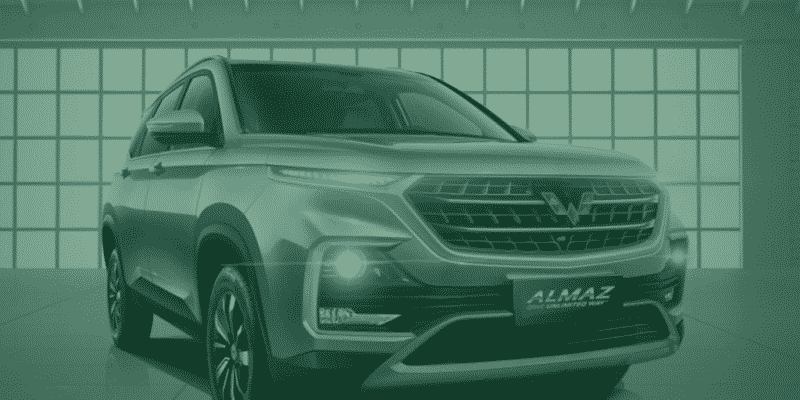The Big Read: History of Wuling
One of the great successes of the Chinese car industry is the Wuling Hongguang. That car is a low-cost, medium MPV (think Dacia Lodgy) that you rightfully can call the Citroen 2CV of China. With nearly 5 million units sold in about 10 years, the Hongguang has made a huge contribution to the mobility of the average Chinese, especially if they only had a limited household budget and did not live in one of the major cities.
A long company history precedes the creation of the Hongguang and, as usual, the early history of Wuling has little to do with cars. The name Wuling itself dates back to the 1980s, sixty years after the company laid the foundation stone.
Aircraft, rice mills, and combustion engines
In 1928 in Liuzhou, the second city of the province of Guangxi bordering Vietnam, the spade went into the ground for what was initially called the Liujiang Machinery Factory. I can already tell you that this factory has undergone countless name changes over time. However, to keep the story clear, I will always refer to the factory by its most famous name: Liuzhou Machinery Factory.
The then-ruling Kuomintang founded the factory as a workshop for the repair of army equipment. Already in the early 1930s, the factory is placed under the control of the Fourth Army, which adds it to its aviation division. Aircraft repair is then the main purpose, but there is also the first start of in-house development. Combustion engines are being tinkered with, and in the early 1930s, Liuzhou Machinery even develops an engine that runs on coal.
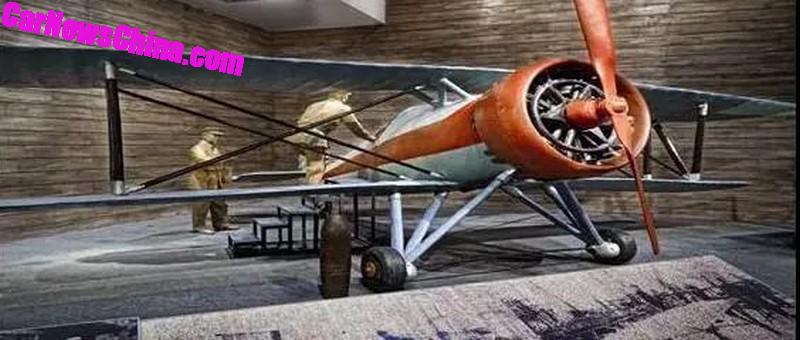
Replica of Liuzhou built training aircraft.
In addition to service and maintenance, Liuzhou Machinery also begins to assemble the whole aircraft. These are mainly light training aircraft, but in 1937 it also presents a single-seat fighter aircraft. During the first half of the turbulent 1940s with the Second World War and the Chinese Civil War, Liuzhou Machinery remains part of the military arsenal, but that changes when the communists take power. In 1946, the plant was put under the control of the province, and from 1948 onwards, it focuses on agricultural mechanization. It starts making machines for processing sugar cane, rice, or corn, among other things.
Liuzhou Machinery also assembles combustion engines to drive those machines. As a result of this activity, it builds a new factory in 1958, called Liuzhou Power Machinery, to make large marine diesel. However, China is in an economic recession as a result of the “Great Leap Forward,” and the shipbuilding market has completely collapsed. Marine diesel engines are therefore never manufactured.
We’ll leave Liuzhou Machinery here for now and focus on Liuzhou Power Machinery. Despite the factory’s false start, it is, in fact, the real predecessor of car manufacturer Wuling. Before that happens, however, the factory will go through another phase.
Tractors, sewing machines, and looms
In 1962, the government of Guangxi separated the Liuzhou Power Machinery Factory from its parent company and made it an independent enterprise. The idea for marine diesel has long since been abandoned and has made way for completely different products: first wood loggers and then agricultural tractors. In 1964 the first model went into production and was given the brand name Fengshou. From 1966, the factory name also reflects the new activity: Liuzhou Power Machinery is renamed Liuzhou Tractor Factory.

Liuzhou Fengshou tractor production
In the 1960s, China is still largely an agricultural economy, so tractor production is good business. Production starts at about 500 tractors per year but will increase tenfold over the next decade. This makes Liuzhou Tractor a successful industrial company by Chinese standards.
Meanwhile, the former parent Liuzhou Machinery factory is expanding its activities. It sets up the Tianyang Auto Parts Factory and the Guangxi First Machine Tool Factory and establishes its own subsidiary Liuzhou Magneto Factory. Its main business is still making combustion engines and supplying Liuzhou Tractor, leading to the Type-70 truck engine in the late 1960s.
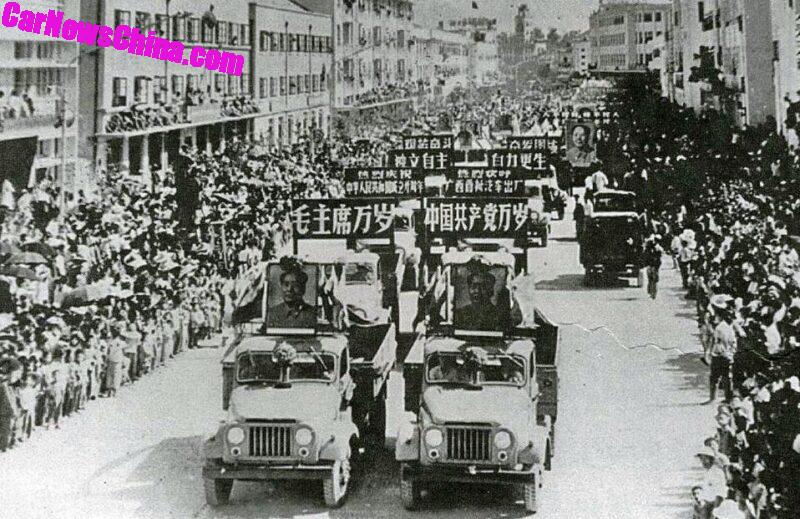
Feiyue truck introduction with a parade
The Guangxi Revolutionary Committee (the provincial government) assesses at the time already that agricultural production alone will not be enough the sustain the production needs, and those new products are needed. The Committee decides on truck building and instructs another agricultural company, Liuzhou Agricultural Machinery Factory (founded in 1954), together with Liuzhou Machinery Factory to jointly select a suitable model. In 23 days of 1969, they hand-build the Feiyue truck, basically an imitation of the Yuejin NJ130. The truck is equipped with a Type-70 engine. This truck-building effort is quickly renamed Liuzhou Automobile Manufacturing Factory and is later swallowed up by the Dongfeng conglomerate.
In the mid-1970s, Guangxi government predictions become a reality, the growth of Liuzhou Tractor is largely over. China is the eve of major economic changes, which will have major consequences for the agricultural sector. All this time, tractors have been part of the planned economy. The central government guarantees a certain number of purchases, but this provision was deleted in 1978. Liuzhou Tractor is suddenly stuck with a production surplus of several hundred units in the free market and must reform to keep the company profitable.

Advertisement for the Feiyue, under its later name Liujiang LZ130
Of course, Liuzhou Tractor is thinking about car production, like many others at the time. A Chinese military committee has just signed a licensing deal with Mitsubishi to produce L100 Minicab vehicles, but Liuzhou Tractor is being skipped as a possible manufacturer. As an interim solution, the factory focuses on producing sewing machines and looms for spinning cotton.
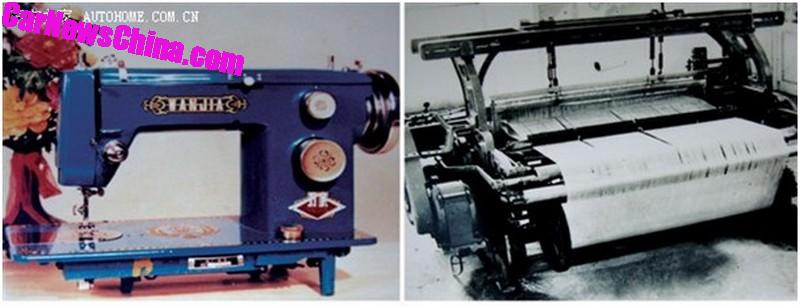
Wanjia sewing equipment
However, car production is not given up. Liuzhou Tractor imports a Mitsubishi from Japan and starts its own “engineering process.” That, of course, comes down to copying the Mitsubishi. Liuzhou completed this process in 1982, and a year later, all necessary licenses and permissions from the government are arranged. Small-scale serial production started in 1984. Liuzhou Tractor changes its name to Liuzhou Light Vehicle Factory for the occasion.

Wuling LZ110 Minitruck with “Wanjia” logo
The copied Mitsubishi comes on the market as Liuzhou LZ110. The logo is a stylized letter W, borrowed from the brand name Wanjia, used for the sewing machines. In 1987 industrial design student Wei Hongren makes a modified version of that logo, wherein the W is built up of five small diamonds. Liuzhou Light Vehicle adopts that logo while introducing the Wuling brand name. The literal translation of Wuling is “five diamonds.” Liuzhou Light Vehicle also negotiates a license from Mitsubishi, so the Wuling vans are no longer illegal copies made on a large scale from 1988 onwards.
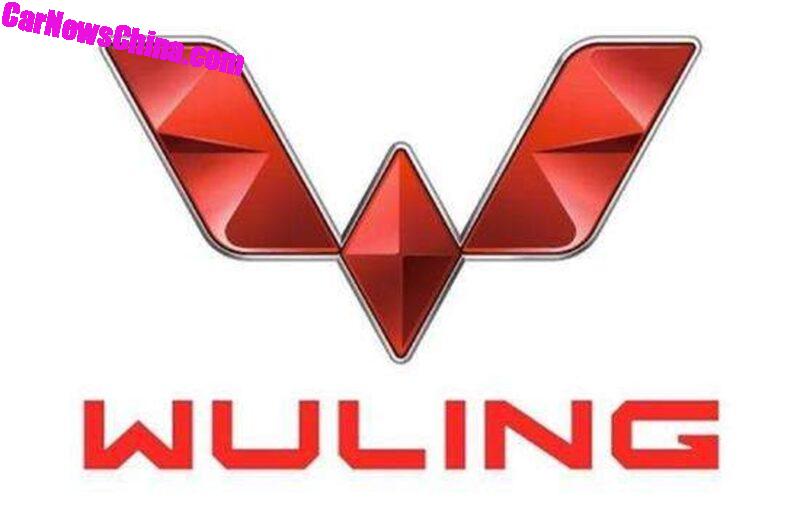
Five diamond logo
The first Wuling is based on the third-generation Mitsubishi Minicab (from 1977). In 1990, based on the fourth-generation Minicab from 1984, the successor hits the market under the Chinese name Xingwang (meaning “dragon”). Both types turn out to be well put together, and Wuling soon becomes the leading producer of these minibusses.
Disai, Visa, and SAIC
We return briefly to the Liuzhou Machinery Factory. Over the years, this factory has increasingly focused on producing combustion engines but has also had a department that makes car parts since the late 1960s. You guessed it; this factory also ventures into a complete car. From 1988 they make a small station wagon, a steel frame with a fiberglass reinforced plastic body. The design is borrowed from the first Daihatsu Charade. This car is made in 1996 under the brand name Disai but can only be sold in Guangxi province due to licensing restrictions. The total production is about 3000 copies.

Liuzhou Disai (photo by Erik van Ingen Schenau)
In addition to the minivans, Liuzhou Light Vehicle is also interested in passenger cars. When production of the Citroen Visa comes to an end in 1988, Wuling manages to take over the remaining stock and production line for a symbolic amount, including molds to assemble it. The first 200 Visas have bodywork from Europe, but Citroen does not send any engines, so a 1-liter three-cylinder engine from Tianjin Xiali is mounted. Just under 1000 Chinese Visas are sold between 1991 and 1994, after which Wuling’s passenger car production comes to a halt again.

Wuling Visa (photo by Erik van Ingen Schenau)
Still, the minibusses remain a great success, and production quickly increases to 100,000 units per year in the late 1990s. Even a setback such as a completely submerged factory in a major flood in 1996 cannot stop growth.
The company’s growth and economic reforms of the Chinese economy further professionalize the auto industry in Liuzhou. In 1989, the provincial government established Liuzhou Wuling Automobile Enterprise Group as a state-owned umbrella holding company. Several companies are brought together under this holding. One of these is, of course, Liuzhou Light Vehicle Factory, which continues under the name Liuzhou Wuling Automobile. Remarkably, in 1996 Liuzhou Machinery Factory becomes a second major branch under the holding company. After the divorce in 1962, mother and daughter have now been reunited under a single roof.
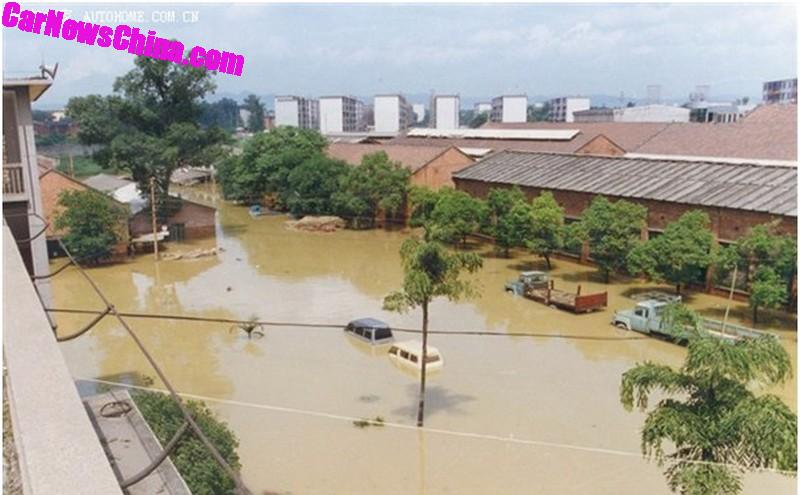
1996 flooding disaster
To further expand the success story, Wuling is looking for an international partner for technical cooperation in the late 1990s. That search leads to General Motors, with whom serious negotiations are being conducted around the year 2000. However, the cooperation encounters an obstacle: GM has just entered into joint ventures with SAIC and Jinbei. Under Chinese law, a foreign manufacturer cannot enter into more than two Chinese joint ventures. This seems like a dead-end, but there is always a creative solution.
In this case, GM’s Chinese partner SAIC is at the center of the story. In 2001 SAIC buys a large stake of about 76% in Wuling Automobile. It then turns to GM and entices the Americans into an investment. Thus, in 2002 the triple joint venture SAIC-GM-Wuling (SGMW) is created. SAIC holds 50.1% of the shares, GM invests 34%, and Wuling Motors owns 15.9%.
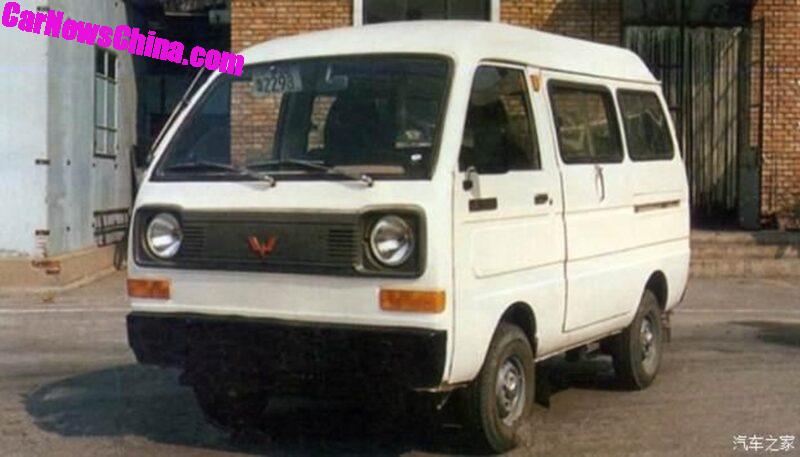 Wuling LZ110 Minivan
Wuling LZ110 Minivan
Here we’ve reached a fork in the road. The Wuling brand is mainly marketed by SGMW, in which Wuling Group has little real involvement. The Wuling company continues with its own activities. The remainder of this article will follow the Wuling company. The brand’s story will be the subject of a future article in which we will explore the history of SAIC. So for the story of the Hongguang from the opening paragraph, you’ll need to have a little patience.
Special vehicles, car parts, and (even more) combustion engines
Wuling Motors has largely sold its automotive branch, but it is, of course, not the end of the company. In the following years, Wuling Motors built a large industrial complex. It splits its activities into three major groups.
In 2001 Wuling Motors United Development was formed. This is the branch that focuses on making all kinds of auto parts. It sets up several joint ventures with reputable international suppliers in the following years, the most famous probably being the French Faurecia company.
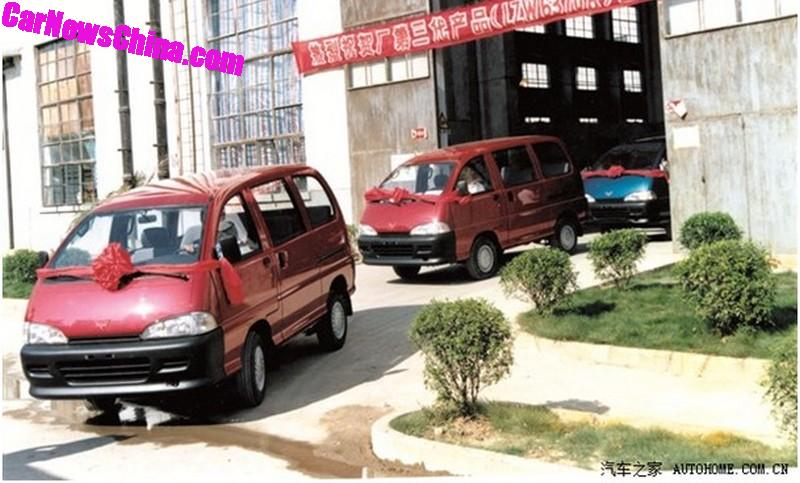
In addition to the Mitsubishi-based cars, Wuling also manufactures the Daihatsu-based LZ6370.
In 2003, Liuzhou Wuling Special Vehicle Manufacturing was set up. This business unit makes all kinds of vehicles, also under the Wuling name. This concerns ATVs, carts you encounter on the golf course, airport, or amusement park, modifications of commercial vehicles, and electric buses.
Finally, the Liuzhou Machinery Factory was renamed in 2006. As Liuzhou Wuling Liuji Power Company, the company grows into a major supplier of combustion engines. The main customers are the various companies and joint ventures of the SAIC conglomerate, but Wuling Liuji also supplies numerous other Chinese car manufacturers.
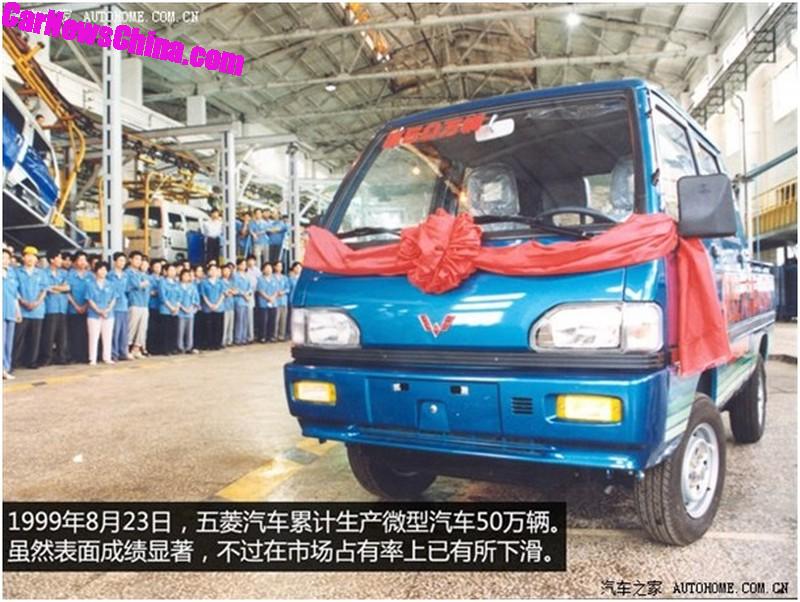
Wuling’s 500.000th car, Xingwang Minitruck, leaves the factory.
In 2007 a major restructuring and partial privatization of Wuling Group followed. Management will bring the three business units mentioned above into an umbrella holding company called Liuzhou Wuling Automobile Industry Company, 49% owned by Wuling Group (Guangxi Province) and 51% by Hong Kong investment company Dragon Hill. This Dragon Hill is owned by businessman Lee Shing, who also has interests in mining, but unfortunately, I can’t find anything specific about the man.
In 2015, Guangxi Province regained a majority share when Wuling Automobile Industry is floated on the Hong Kong Stock Exchange. Wuling Group is then officially renamed Guangxi Automobile Group and controls 60.5% of the shares in the Wuling Automobile Industry. Dragon Hill retains about 13.5%, and the remaining 26 % is traded on the exchange.
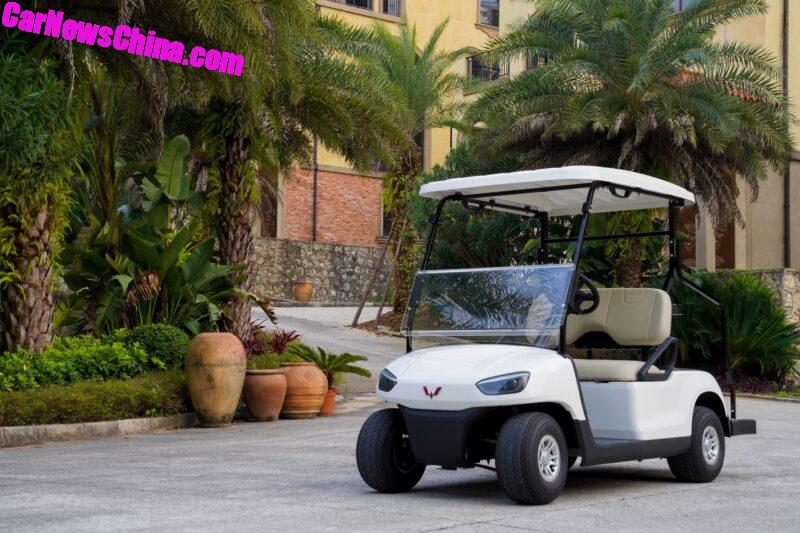
Wuling branded golf cart by Guangxi Automobile.
In 2010, Wuling Motors sold 10% of its shares in SAIC-GM-Wuling to General Motors, leaving a small minority interest of less than 6% in the joint venture. Yet, it remains an essential player, especially because it licenses the name of the very successful Wuling car brand.
In summary, Guangxi Automobile Group is nowadays mainly a supplier to the automotive industry. They are an important player in parts and engines and still make special vehicles on a limited scale under the Wuling brand name. However, the Wuling passenger cars are a product of the joint venture with SAIC and GM, a strategic decision that has brought the brand great success.



